The Brown Trout is a species of fish in the Salmonidae family. Some of its closest relatives include the salmon, grayling, whitefish, char, and more. This species, also known as the “Lake Trout,” has high popularity with anglers, fly fishermen in particular. Read on to learn about the Brown Trout.
Description of the Brown Trout
As their name suggests, fish of this species have a brownish coloration to their scales. They also have brown and black spots along their flanks. The males and females have similar coloration and appearance, but the males have slightly larger heads than the females do.
Adults measure between 7 and 39 in. long, and weigh up to 55 lbs.!
Interesting Facts About the Brown Trout
These fish have a number of unique traits and behaviors. Learn more about what makes this species so interesting, below.
- What’s in a Name – The scientific name of this fish, Salmo trutta, derives from Latin roots. The Latin word “trutta” literally translates to “trout.”
- Summer Kills – Though these fish have stable populations, their numbers still face some level of threat. Excessively warm water temperatures due to global climate change cause die-offs of this species in large numbers. The increased temperature reduces dissolved oxygen, suffocating the fish.
- Eutrophication – Hot water isn’t the only thing getting these fish into trouble. Fertilizer and other pollutants cause eutrophication in the waters that these fish inhabit. The fertilizers wash into the rivers and lakes, causing algae to bloom and consume all the dissolved oxygen. In this situation, the fish, again, suffocate.
- Anadromous – Some, but not all, populations of this fish display anadromous breeding behavior. Anadromous breeders live in the ocean for their adult lives, and return to freshwater to spawn. In the vast majority of anadromous fish, the fish perish post-spawning.
Habitat of the Brown Trout
While these fish inhabit a number of different ecosystems, they have a few specific preferences for their habitats. They often live in deep, cold streams or lakes with a current to circulate the water. Within these waters, they flock to areas with some type of protective cover, like overhanging roots or tree branches.
Some populations travel from freshwater to the ocean as they reach adulthood. Other populations remain in freshwater habitats their entire lives.
Distribution of the Brown Trout
The native range of this species spreads from Europe into Asia and northern Africa. However, humans have introduced this species into a number of areas outside of its native range.
People have released this fish into waterways of North America, South America, other parts of Africa, Australia and the surrounding islands, and more. In fact, you can now find this fish on every continent except Antarctica.
Diet of the Brown Trout
This species has carnivorous feeding habits. As an opportunistic feeder, it hunts just about anything that it comes across and can easily fit in its mouth. Their diet varies based on their age, and thus, their size. Larger fish can hunt for larger prey.
Some of the different prey items that these fish consume include insects, insect larvae, worms, crustaceans, minnows and other small fish, fish eggs, and plankton.
Brown Trout and Human Interaction
Humans interact with this species quite frequently, and human interaction is part of the reason this species has spread across the globe. It is a popular sport fish, and fishermen worldwide enjoy catching this species. In fact, their popularity as a game fish is one of the primary reasons people spread them across freshwater habitats worldwide.
Sadly, human activity has impacted this species to some extent. Climate change, pollution, and overfishing have all caused decline in some populations and regions. However, the IUCN lists the population as a whole as Least Concern.
Domestication
Humans have not domesticated this fish species in any way.
Does the Brown Trout Make a Good Pet
Some people do keep trout in home aquariums, but they are difficult to care for. You would need an extensively large tank for even one or two fish, as adults can grow quite large. This makes it quite impractical to keep one as a pet.
Brown Trout Care
Some aquariums house this species in their collections. They keep these fish in large tanks that replicate their natural habitats as closely as possible. Many provide real or artificial branches, roots, and similar structures to give the fish a place to hide. Additionally, aquariums often house this species with similar fish that naturally share their habitats.
Behavior of the Brown Trout
Even young members of this species establish territories for themselves. These territories often border those of other fish, and thus they live in relatively close proximity to one another.
Some populations live their entire lives in freshwater habitats, while others swim to the ocean. Regardless of if the fish is anadromous or not, all populations migrate to some extent.
Reproduction of the Brown Trout
When it comes time to spawn, these fish generally return to the same streams that they hatched from. Fish in different regions spawn at different times of year.
The females choose a suitable area of gravel and dig a shallow nest, known as a “redd.” They deposit several hundred eggs within the redd, and the males fertilize the eggs. After hatching, the young fish receive no parental care. They begin to establish their own territories quickly.




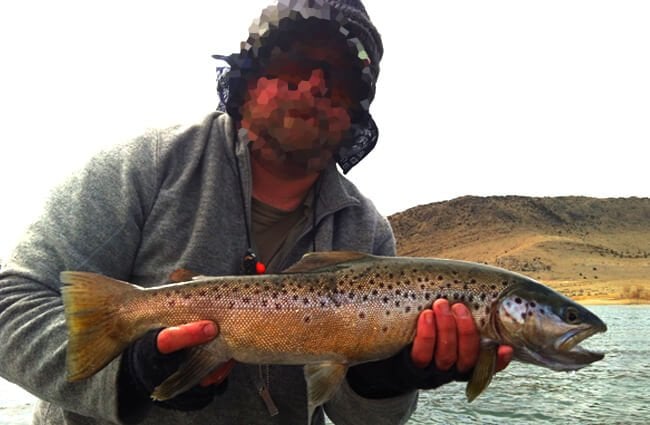

![Brown Trout being tagged and released Brown Trout being tagged and released Photo by: USFWS Mountain-Prairie [Public Domain] https://creativecommons.org/licenses/by/2.0/](https://animals.net/wp-content/uploads/2020/01/Brown-Trout-3-650x425.jpg)

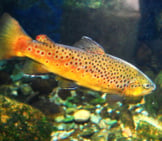
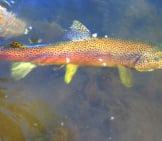
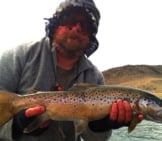
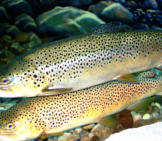
![Brown Trout being tagged and released Brown Trout Being Tagged And Released Photo By: Usfws Mountain-Prairie [Public Domain] Https://Creativecommons.org/Licenses/By/2.0/](https://animals.net/wp-content/uploads/2020/01/Brown-Trout-3-162x141.jpg)
![Red Angus Closeup of a beautiful Red Angus cowPhoto by: U.S. Department of Agriculture [pubic domain]https://creativecommons.org/licenses/by/2.0/](https://animals.net/wp-content/uploads/2020/03/Red-Angus-4-238x178.jpg)












![Red Angus Closeup of a beautiful Red Angus cowPhoto by: U.S. Department of Agriculture [pubic domain]https://creativecommons.org/licenses/by/2.0/](https://animals.net/wp-content/uploads/2020/03/Red-Angus-4-100x75.jpg)

